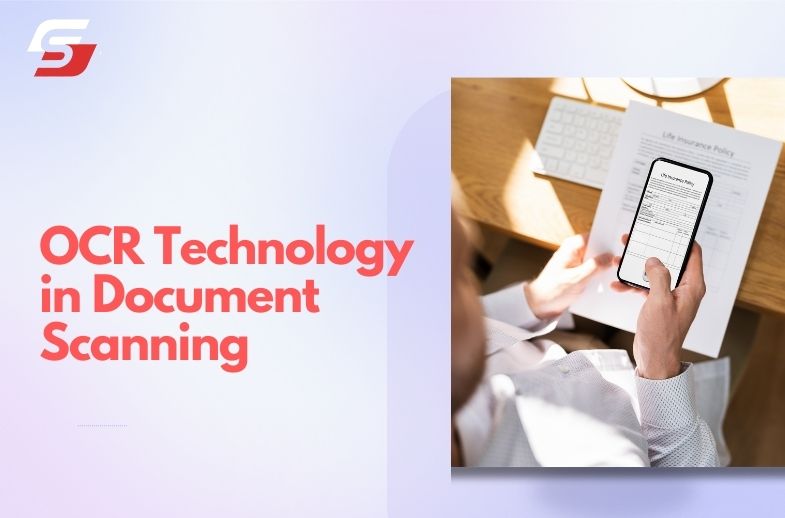Digital transformation projects can face challenges such as skill shortages or limited technology. However, the introduction of OCR, or Optical Character Recognition, software has brought significant advancements.
Understanding OCR
OCR, also known as text recognition, is a tool designed for data extraction and repurposing. This data can be from various sources like digital images, Image-only PDFs, or any written or printed text. OCR technology aligns characters from images into words and sentences, making data easily accessible and editable.
OCR software uses smart AI and Intelligent Character Recognition (ICR). This technology helps it recognize different languages and the way people write by hand. This technology is widely utilized in law and historical research, converting physical documents into editable digital formats.
Advantages of OCR Data Entry
OCR enhances work efficiency and productivity, particularly in organizations with large volumes of documents and physical data. Key advantages include:
- Improved Productivity: OCR allows for rapid data retrieval, freeing up employee time for other critical business tasks. This technology also facilitates remote access to specific information, reducing physical trips to data storage areas.
- Cost Reduction: Adopting OCR technology reduces the need for data extraction specialists and cuts costs related to copying, printing, and shipping.
- High Accuracy: Manual data entry is prone to errors. OCR automates this process, greatly reducing the likelihood of mistakes.
- Enhanced Data Security: OCR technology mitigates risks associated with paper documents, such as loss, theft, or damage.
- Easy Text-Searchable Documents: OCR makes digital information fully text-searchable, enabling efficient information retrieval using relevant keywords.
- Superior Customer Service: OCR technology aids customer-care teams in quickly accessing customer-related information, reducing customer wait times and enhancing their experience.
- Editable Documents: OCR technology converts data into various formats for easy editing, useful for updating information in scanned documents.
Key Features of OCR Technology
Accurate Text Recognition
OCR technology excels in accurately recognizing and extracting text from diverse sources. It can decipher a wide range of fonts, sizes, and styles, ensuring a high level of precision in converting image-based text into editable and searchable formats.

Multilingual Support
One of OCR’s significant advantages is its ability to support multiple languages. Whether your documents are in English, Chinese, Spanish, or any other language, OCR can process and convert text in various linguistic formats.
Document Layout Preservation
OCR goes beyond simple text recognition; it can also preserve the layout and formatting of the original document. This includes maintaining the structure of tables, columns, and paragraphs, ensuring that the converted document closely resembles the source.
Common Business Applications of OCR
Good image to text converter which uses OCR technology has replaced the labor-intensive task of manually copying texts from images with an automated workflow. Notable applications include:
Data Retrieval: The Power of OCR
OCR, short for Optical Character Recognition, changes image-only PDFs and paper documents into forms you can search and change. This is a big step forward in handling data. It turns still pictures into lively, working documents. You can look up things in these documents by typing in keywords and changing what they say. This is very helpful for places with lots of paperwork to keep track of.
Keeping Data Safe with Cloud Storage and OCR
When OCR works together with cloud storage, it makes keeping data safe better. This mix makes sure that papers are not just turned into digital form but are also kept safely in the cloud. Cloud storage is strong against risks like losing, stealing, or damaging paper documents. Also, having control over who can see what in the cloud, made better by OCR’s way of sorting data, helps a lot in stopping people from seeing things they shouldn’t. This double way of using OCR and cloud storage keeps important information both safe and easy to get to.
Cutting Costs by Automating Data Entry with OCR
Using OCR to automate putting data into computers helps save a lot of money. It means there’s no need for people to type in data by hand, so it saves on paying workers. Also, because OCR works fast and correctly, there’s less time and effort spent fixing mistakes. Moving from people typing in data to machines doing it not only lowers the money spent but also lets people work on more interesting and important tasks. This makes the whole place work better.
Read Also: What are Word Processing Tools – Top 10 Picks
Checking IDs Digitally with OCR: Making Rules Easier to Follow
OCR is very important for checking people’s IDs digitally. This is really important for places that need to follow certain rules or make sure their customers are who they say they are. OCR can quickly pull out information from different kinds of ID, like driver’s licenses or passports. This quick way of getting information is key to stopping wrong or fake IDs. It helps keep the customer list clean and follows the rules. Using OCR for checking IDs is a big step in following laws and stopping false identities.
Conclusion
OCR technology in the context of document scanning clearly displays its has power and potential to convert static information into active, searchable data. OCR has become an essential tool in the modern business environment, ranging from automating data entry procedures to better accessibility and collaboration. Organizations increasingly focus on efficiency, accuracy and digital transformation; therefore, OCR is a gateway to obtain true value of the huge textual information. It is not just a move forward in document management, but it’s also an entire leap into the future where information cannot merely be stored but actively used for strategic profit.


